If you’re the outdoorsy type, South America is the continent for you. While here, you might find yourself hiking up immense mountains, through thick forests, and – if you’re a coffee connoisseur – enjoying some of the best beans that you’ll ever come across.
As with anything, some parts stand above the rest. We don’t have time to talk about all the great places in South America, but don’t worry; This article will give you a taste of the top locations. After all, the best is what matters the most.
The first item on our list will come as no surprise to you. These Enchanted Isles are a hotbed of nature. It’s as though creatures too fabulous for the rest of the world were shipped here, for us to enjoy. You may have even learned about these islands in school. If you’re struggling to remember back, they involved a man known as “Charles Darwin.”
The Galapagos Islands
When a place is called “The Enchanted Isles” you know you’re in for a treat. In the early hours of the morning, thick fog engulfs the Isles. This mist is so opaque, and so perfectly white. It’s as though the isles sink into a light snowdrift. Oftentimes, they disappear altogether.
This eerie mist is how the island got its colloquial name, but it’s the animals that kept it. And, it’s the animals that keep people coming for.
Penguins waddling around amongst cacti. This is a sight you’d expect to see in a fever dream, but on the Galapagos Islands, it’s reality. Swimming Lizards. Tortoises the size of small Horses, and many more strange creatures call this Archipelago home. So much biodiversity, crammed onto a few small islands. One of the top places to visit in South America, no matter who you ask.
Why though, are these islands able to upstage the rest of the world so spectacularly? It makes our home shores of England look like a dreary lump of rock.
First off, the Islands offer a smorgasbord of biomes to explore; there’s the highland forests, overgrown scrubland, and the sand dunes. Each island has its own unique habitat. And yet, they all work alongside each other, in harmony.

This fact did not escape the attention of Charles Darwin. The different islands were home to different kinds of Finches. And, these finches had different tools best suited to the environment they inhabited. Tiny birds became the spark that inspired one of histories most important theories; Evolution.
The rest of the world might never have been as exotic as these islands. It could, however, have come close. We know that America was once home to many creatures that are no longer around. The reason they’re no longer around? Because early man ate them into extinction – forgive our brief moment of doom and gloom. Understanding the importance of these islands is vital, but we will get back to the happy stuff soon.
We discovered the Galapagos Islands in 1535. In the short time since then, we have almost caused the extinction of one of its most beloved attractions.
Sailors visiting the isles used to take Galapagos Tortoises with them when they left. These gentle giants could live for up to a year without food or water. Sadly, the combination of these two facts made them ideal meals during long sea voyages. Fresh food was scarce, after all.
You can no longer snack on tortoises while visiting the Galapagos Islands, but there are plenty of eateries available! As you might expect, you can sample everything from fresh lobster, crab, fish and even sea cucumber. There’s nothing quite like savouring a plate of ceviche – fish marinated in lemon – while watching the sun sink into the ocean.
Iguazu Falls
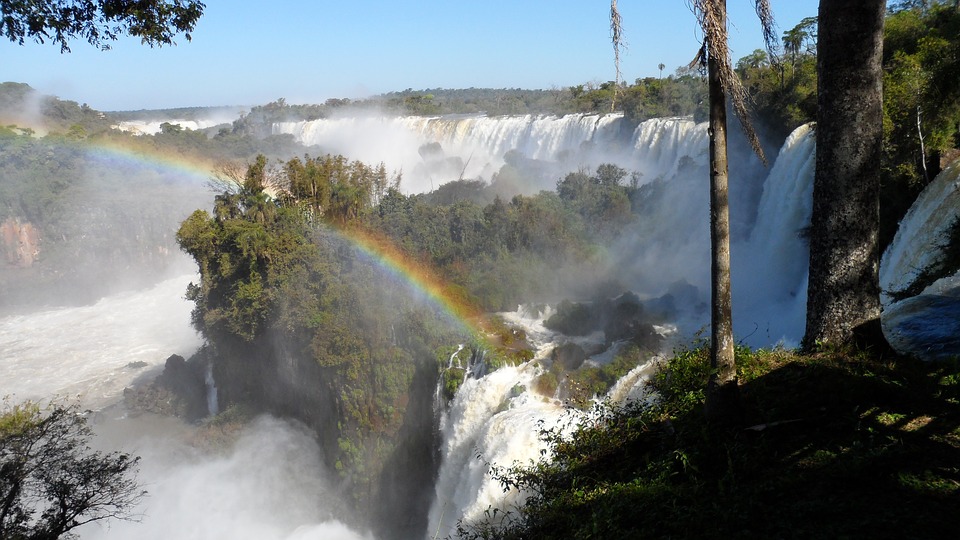
If this isn’t on your bucket list already, then it’s time to add it. Trust us, Iguazu Falls makes Niagra Falls look like a leaky faucet.
Not only is it much taller than Niagra Falls, but it’s twice as wide. 1.7 miles wide, to be precise. It also boasts a whopping 275 waterfalls in total. Many of these waterfalls come out into a single gorge, known as “The Devils Throat,” which you can see above.
Iguazu Falls are so vast that they span two countries. As you would expect, both countries claim that their side is the best. Neither is right.
With 80 percent in Argentina and only 20 percent in Brazil, you might get the impression that there’s more to see on the Argentian side. You would be right of course, but that doesn’t mean it’s the best side.
The Argentian Side
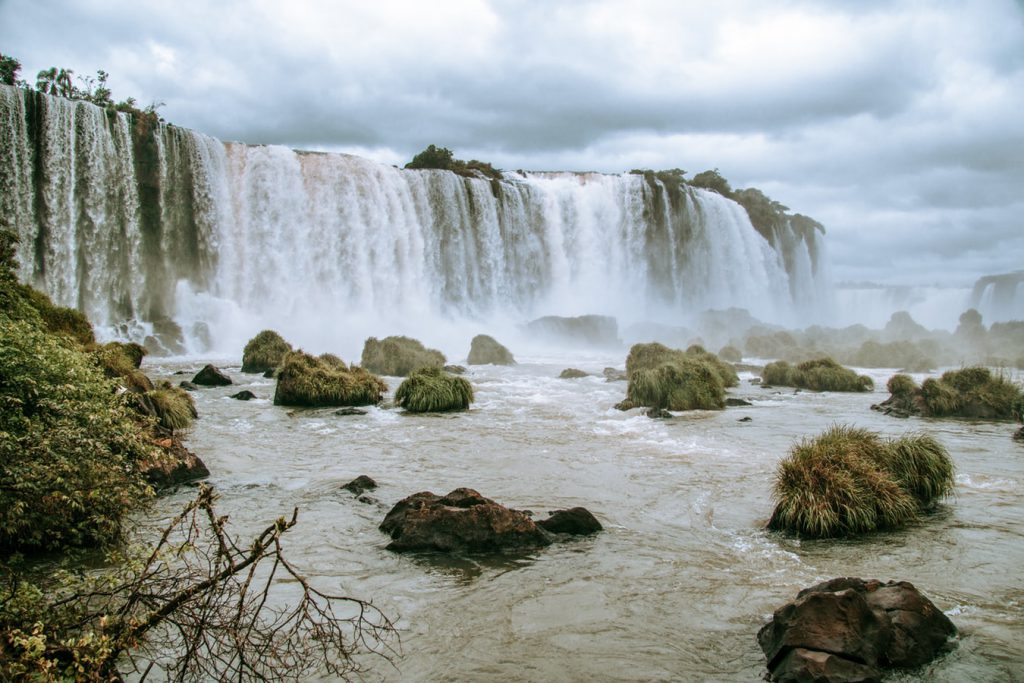
While the Argentian side is the largest, it also involves the most time stood around waiting. You will have to take a train to get between viewing points. This isn’t an issue if you plan on only seeing a few viewing points.
Once you actually get to the viewing points, there are many nature trails. These trails allow visitors to spread out, keeping crowding to a minimum. If you’re someone who hates being in large groups, the Argentian side might be for you.
From this side of the falls, you can also get right on top of the waterfall. From there, you can stare straight down into the Devil’s Throat – undoubtedly the most breathtaking part of the falls.
If you’re craving those Instagram likes, a selfie with the Devil’s Throat beneath you is a surefire way to get boatloads of them. Speaking of boats, you can also get a ride on one that actually takes you right beneath the falls. You will get wet though, honcho or no honcho.
It might seem like the Argentian side is the undisputed winner, but don’t count the Brazillian side out just yet; it has plenty to offer.
The Brazillian Side
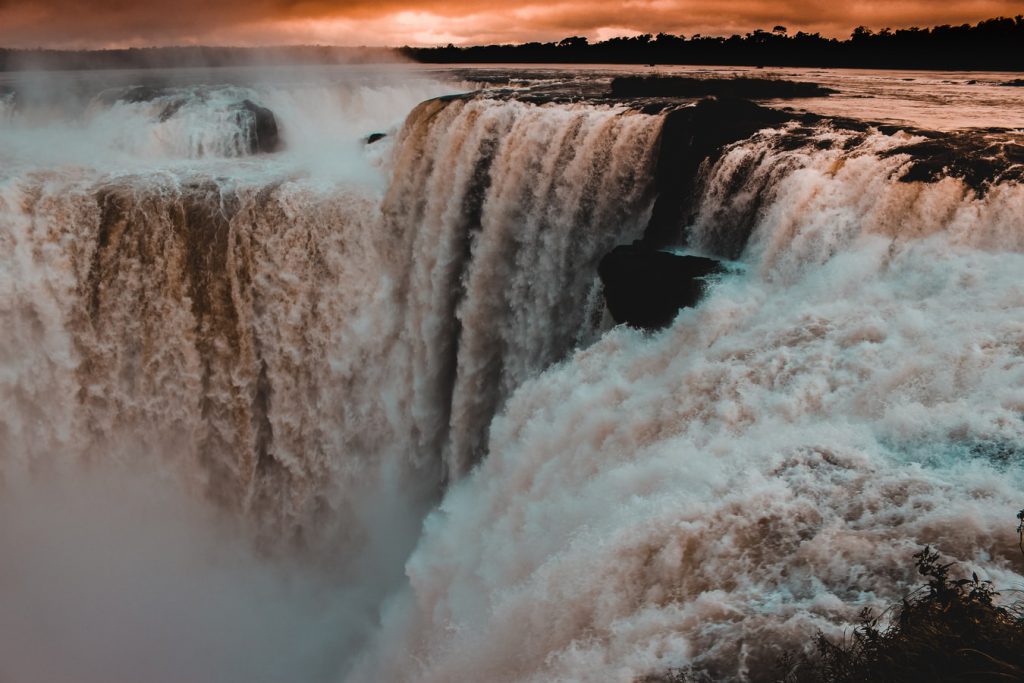
Many folks say that if you want to see the falls, you do so from the Brazillian side. However, if you want to *feel* the falls, you need to be on the Argentian side. If you ask us, this is backward.
Yes, there are many viewing points on the Argentinian side, but they’re pretty close up. It’s difficult to take in the sheer size of the falls when you’re right next to them. The saying ‘can’t see the wood for the trees.’ Is certainly true here.
If this view is not enough for you, why not hop into a helicopter? The ride only lasts 10 minutes, but that’s more than enough time to take in the panoramic view.
If you have one of the rare people with you who aren’t impressed by the falls, there’s a place for them. The bird park is just off to the side of the falls, and is a nice way to break up the day.
Flamingo’s, Toucans, Emus. Just a couple of examples of the birds that you can see up close here. There might even be a snake or two, but don’t worry. The park is perfectly safe.
That doesn’t mean that the Brazilian side is not without its downsides though.
As mentioned above, there’s only a couple of points you can view the falls from here. On the Argentian side, there’s more variety. There’s also only one trail, which can result in crowds.
In summary, we won’t tell you which side is our favourite. They both have pros and cons, and if you have the time, you should see them both. If you’re in Brazil or Argentina you don’t have much of an excuse either; the Iguazu Falls are easy to get to. Getting yourself to leave is a little harder, though.
Machu Picchu
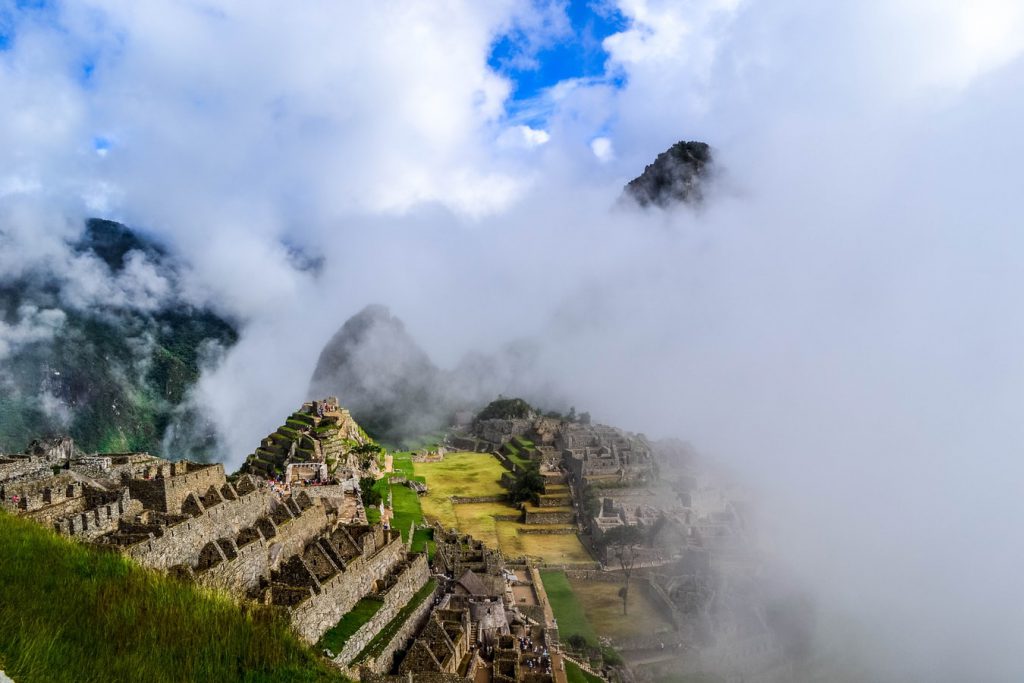
Located in Peru, this citadel offers more than just a name that’s fun to say. Sitting 2,430 meters above sea level, Machu Picchu is a wonder of the ancient world. This is, without a doubt, one of the number one places to visit in South America. Words fall short when trying to describe the beauty of it, but we’ll do our best.
Its Purpose Is Lost To The Past
While there are plenty of theories as to what Machu Picchu’s purpose was, we still can’t say for sure. A common belief is that the Inca Pachacuti – an all-powerful leader – had it built as his estate. Many historians also agree that it used to be a pilgrimage site. The trail people used to reach this site is known as the “Inca Trail,” which is still in use!
An Architectural Wonder
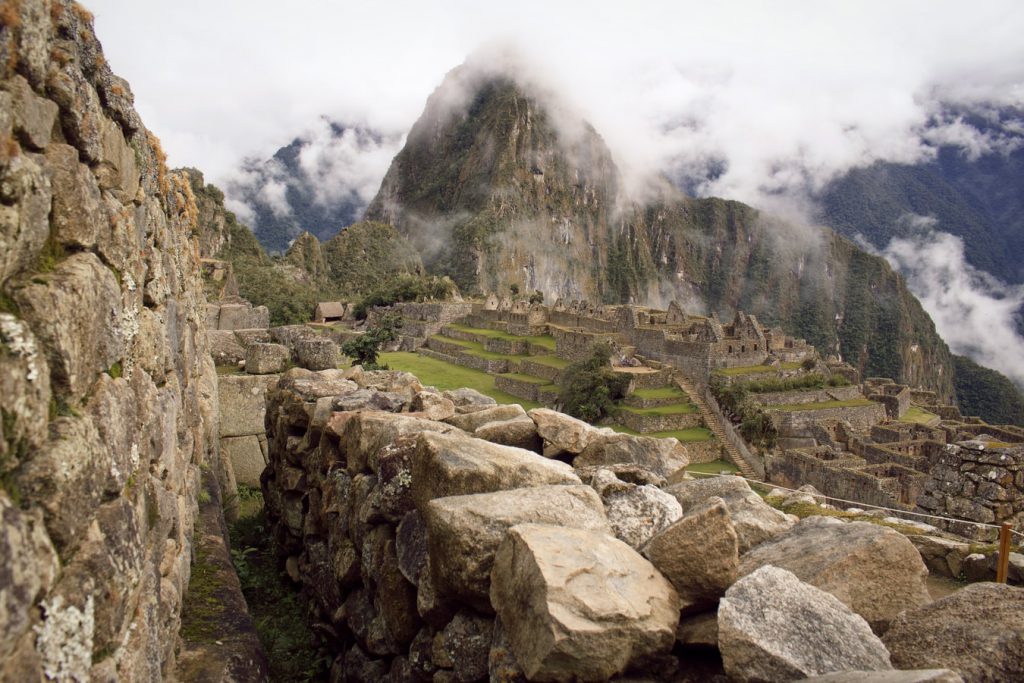
The ruins of Machu Picchu sit atop two major fault lines. If you’re not familiar with earthquakes, this means that the area experiences quite a few of them. Given that Macchu Pichu is, at its core, a pile of old stones, you might think it would topple down like, well, a pile of old stones.
The truth of the matter is that the Incans used a specific method of bricklaying to create this ancient site—each brick, crafted to fit perfectly in with those around it. The gap between bricks is so fine that you would struggle to fit a piece of cardboard in between them.
This careful layering of stone atop stone means that they don’t collapse when a quake hits. Instead, they are said to “dance” about. While time-consuming, this method of building has ensured that Macchu Pichu stands strong through ages of shifting tectonic plates, harsh weather, and heavy tourism.
Incredible Views
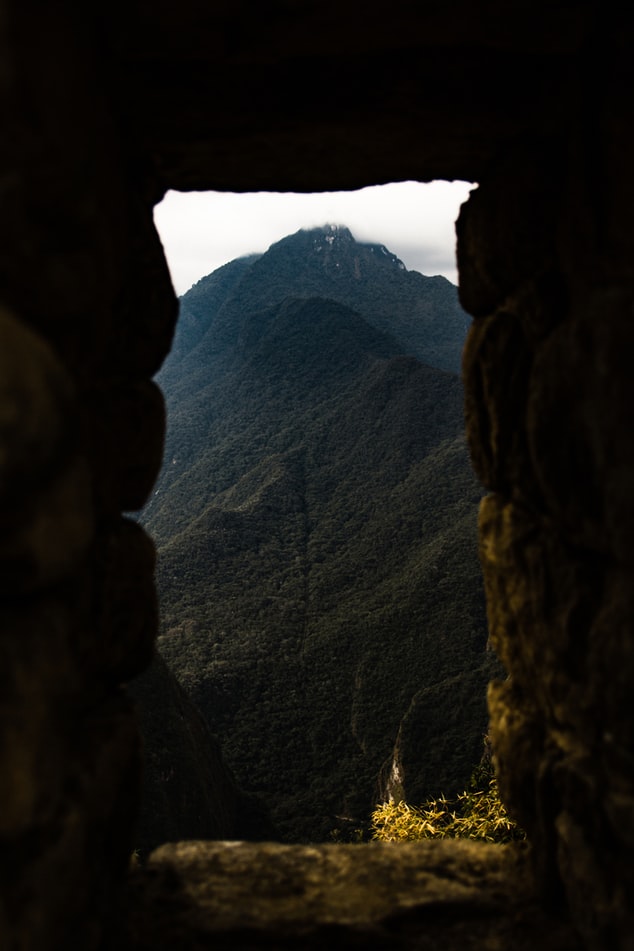
As a general rule, the higher you get, the better the views become. Sitting at 2,430 meters above sea-level, the sight from Macchu Pichu is something to behold. If you truly want a view though, you will have to trek up one of the towering peaks that flank Macchu Pichu.
Look at most pictures of Macchu Pichu, and you’ll see one distinctive mountain in the background. Known as Huayana Pichu, the summit of this mountain is undoubtedly the best point to view the Citadel from. Mind you, the walk up there is no easy task.
If you want to get this view, you will need to book months in advance. The trip also involves waking up early – and we do mean early, as queues for the bus start at 4 AM. If you’re able to make it to the base of the mountain without falling back to sleep, then you’ve got quite a walk ahead of you.
It seems intimidating at first. An uphill 2-hour trek is something most of us aren’t used to doing. Make sure you’re an experienced hiker before heading up. You can read more about the risks of Huayana Pichu here, but so long as you’re in good physical shape and take plenty of breaks, you should be fine. Taking a second or two is also a great way to take in the view. Sure, it’s best at the top, but it’s also pretty darn good on the way up.
No matter how high you climb in the Citadel, you can’t fully appreciate the complexity of Macchu Pichu. If you want the best view, you’ve got to brave Huayana Pichu.
This is still one of the top places to visit in South America, even if you don’t fancy the walk. Still, if you’re going to go, why not go all the way?
Before you can do that though, you have to make sure that you have taken the necessary steps; Packed bug spray, checked in, and gotten all the required vaccines.
There are a couple of vaccines we recommend you get before heading to South America. These include Hepatitis A, Typhoid, Tetanus and Diphtheria, and more.
These are only strongly recommended, however. If you want to visit many of the top South American destinations, you’ll need to have a Yellow Fever vaccine.
You won’t even be able to enter many countries without evidence that you’ve received this vaccine. Other than that though, South America offers memories that you will carry with you forever.

